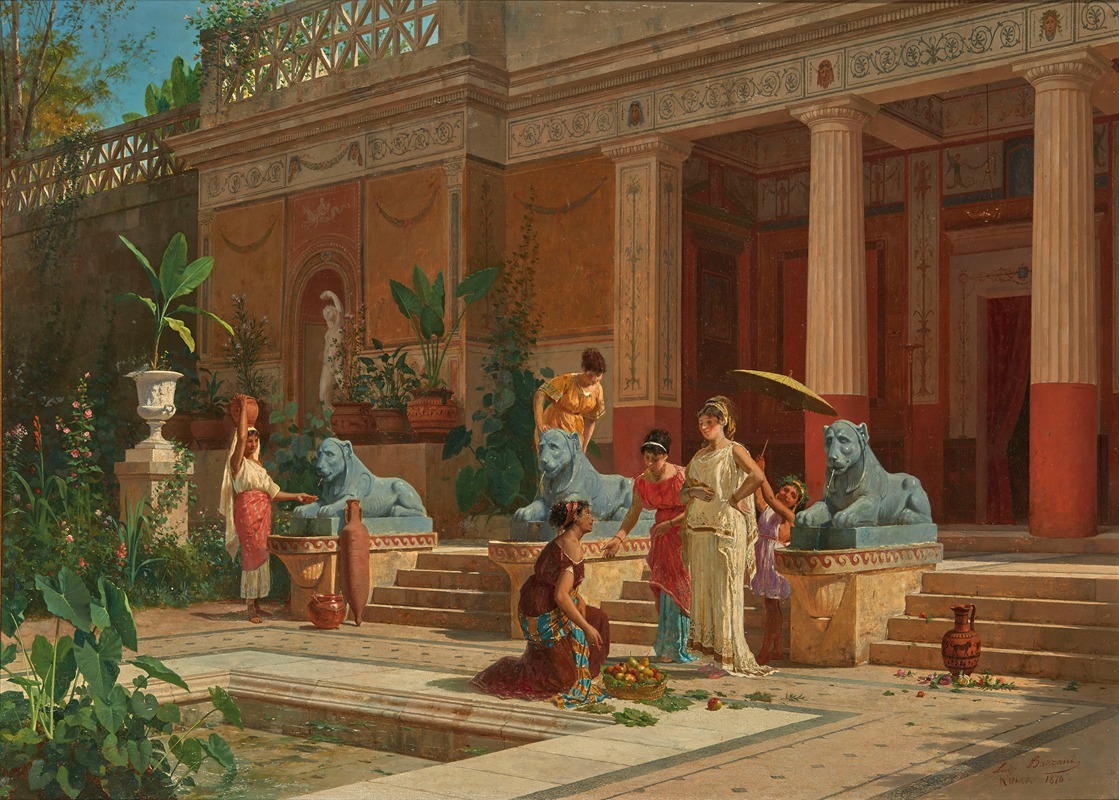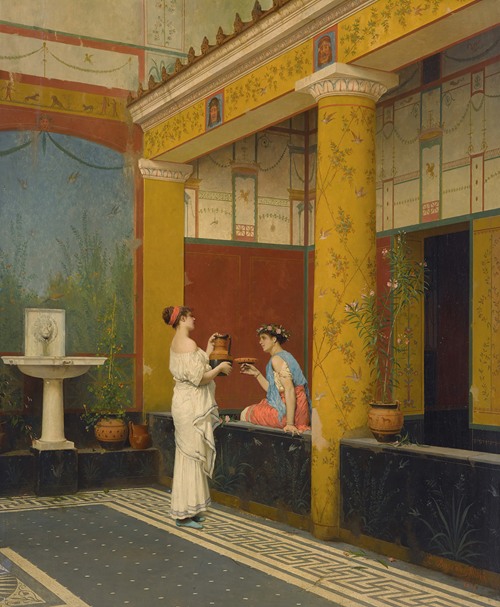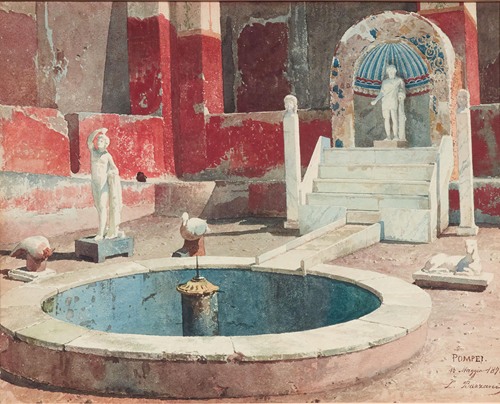
Luigi Bazzani, also called Il Bazzanetto, was an Italian painter, illustrator, and watercolorist. He was born November 8, 1836 in Bologna, Italy. Bazzani studied at Bologna's Accademia di Belle Arti then traveled to France, Germany and, eventually, Rome where he settled down in 1861 and began to specialize in genre and landscape subjects as well as set designs for theaters. Many of his paintings featured the remains of the city's monuments from classical antiquity.
Inspired by the rediscovery of Pompeii in 1748, he spent 35 years of his life from approximately 1880 to 1915 documenting the ruins of the ancient city that had been exposed by ongoing excavations with watercolor paintings. Bazzani experimented with the techniques of architectural relief, an aspect so far little known but of great interest for archaeological research and his attention to detail was prized by scientists working at the site. His often exquisitely muted colors and his superb technical skill enabled him to replicate antique stone, whether chipped facing or other decaying aspects of it. At the time of Bazzani's work in Pompeii, the freshly excavated remains were still vibrant with original paint.
He contributed a series of fourteen illustrations to a publication by Pompeii's leading archaeologist Amedeo Maiuri. Since then, however, many interiors have been lost to deterioration. So his work has been a valuable resource for modern archaeologists and scholars as well.




